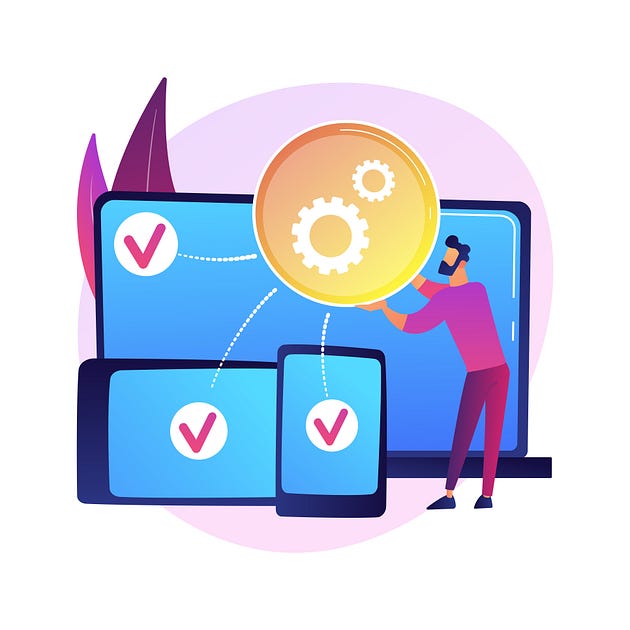Custom eLearning development has become a pivotal tool for organizations and educational institutions aiming to provide personalized and impactful learning experiences. Unlike generic, off-the-shelf solutions, custom eLearning is tailored to meet specific learning objectives and audience needs. This article will outline the key steps involved in custom eLearning development, ensuring a comprehensive understanding of the process.

1. Conducting a Needs Analysis
The first and most crucial step in custom eLearning development is conducting a thorough needs analysis. This involves understanding the specific goals, challenges, and requirements of the organization or learners. Key activities in this phase include:
- Identifying Learning Objectives: Clearly define what the learners should know or be able to do after completing the course.
- Assessing Audience Needs: Understand the characteristics, preferences, and skill levels of the target audience.
- Analyzing Existing Materials: Review any existing training materials or resources to identify gaps and areas for improvement.
2. Designing the Course
Once the needs analysis is complete, the next step in custom eLearning development is designing the course. This involves creating a detailed blueprint for the eLearning course, including:
- Developing a Course Outline: Create a structured outline that covers all the topics and subtopics to be included in the course.
- Storyboarding: Design visual representations of each screen or slide in the course, outlining the content, media, and interactive elements.
- Choosing the Right Instructional Design Model: Select an instructional design model (e.g., ADDIE, SAM) that best suits the project’s requirements.
3. Creating Content
Content creation is a critical phase in custom eLearning development, where the actual course materials are developed. This step involves:
- Writing Scripts and Narratives: Develop detailed scripts for video or audio elements, as well as narratives for the course content.
- Developing Multimedia Elements: Create graphics, animations, videos, and other multimedia elements to enhance the learning experience.
- Designing Assessments: Develop quizzes, tests, and other assessment tools to measure learners’ understanding and progress.

4. Developing the Course
In this step, the designed content is brought to life using eLearning authoring tools. Custom eLearning development typically involves the following activities:
- Using Authoring Tools: Tools like Articulate Storyline, Adobe Captivate, or Lectora are used to create interactive and engaging eLearning modules.
- Integrating Multimedia: Incorporate multimedia elements into the course to enhance engagement and retention.
- Programming Interactivities: Develop interactive elements such as drag-and-drop activities, simulations, and branching scenarios to make the learning experience more dynamic.
5. Testing and Quality Assurance
Before the course is rolled out to learners, it’s essential to conduct thorough testing and quality assurance. This step ensures that the custom eLearning course functions as intended and meets the desired quality standards. Key activities include:
- Beta Testing: Conduct beta testing with a small group of users to identify any issues or areas for improvement.
- Quality Checks: Review the course for accuracy, consistency, and compliance with instructional design principles.
- Technical Testing: Ensure that the course works smoothly across different devices, browsers, and learning management systems (LMS).
6. Launching the Course
Once the course has passed all testing and quality assurance checks, it is ready to be launched. This step involves:
- Uploading to an LMS: Upload the course to a learning management system, ensuring it is accessible to the target audience.
- Setting Up Tracking and Reporting: Configure tracking and reporting features to monitor learners’ progress and performance.
- Communicating with Learners: Inform learners about the availability of the new course and provide any necessary instructions or support.
7. Evaluating and Updating the Course
Custom eLearning development is an ongoing process that doesn’t end with the course launch. Continuous evaluation and updates are necessary to ensure the course remains relevant and effective. Key activities include:
- Collecting Feedback: Gather feedback from learners and stakeholders to identify areas for improvement.
- Analyzing Data: Use data analytics and reporting tools to evaluate the effectiveness of the course and identify trends or patterns.
- Making Updates: Regularly update the course content, multimedia elements, and interactive features to keep the course current and engaging.

Conclusion
Custom eLearning development involves a systematic process that includes needs analysis, course design, content creation, development, testing, launching, and continuous evaluation. By following these steps, organizations and educational institutions can create tailored, engaging, and effective eLearning courses that meet the unique needs of their learners. Investing in custom eLearning development ensures that the training and educational experiences are relevant, engaging, and aligned with specific goals, ultimately leading to better learning outcomes.